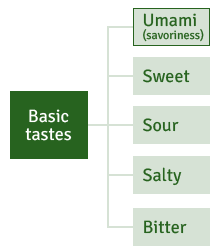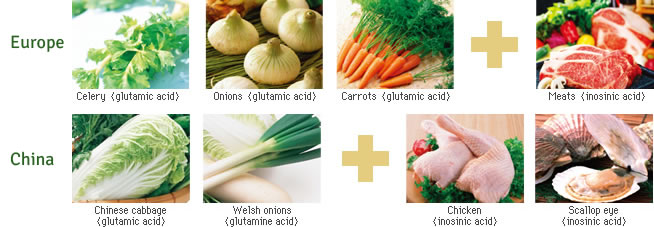
Umami, the savory flavor found in kombu kelp, is regarded as one of the five basic tastes. Previously, there were only four basic tastes, but kombu kelp possesses a taste that simply could not be categorized in any one of those tastes. This delightful taste, which is abundant in kombu kelp, was named Umami and has since become the fifth basic taste.
Discovery of Umami
Professor Ikeda of Tokyo Imperial University, who focused on the fact that Japanese food had used kombu kelp for soup broth since ancient times, conducted research to understand the secret of the taste of kombu kelp broth. In 1908, he discovered that kombu kelp's taste came from the Umami component. Umami was discovered in Japan, so then the term Umami began to be used internationally after the First International Symposium on Umami in 1985.


 Umami, the savory flavor found in kombu kelp, is regarded as one of the five basic tastes. Previously, there were only four basic tastes, but kombu kelp possesses a taste that simply could not be categorized in any one of those tastes. This delightful taste, which is abundant in kombu kelp, was named Umami and has since become the fifth basic taste.
Umami, the savory flavor found in kombu kelp, is regarded as one of the five basic tastes. Previously, there were only four basic tastes, but kombu kelp possesses a taste that simply could not be categorized in any one of those tastes. This delightful taste, which is abundant in kombu kelp, was named Umami and has since become the fifth basic taste.

